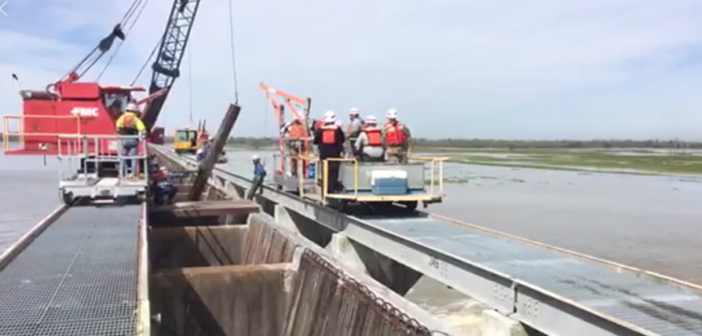While all eyes are on the coronavirus pandemic, high water on the inland waterway system is making its presence known once again this year. High water conditions on the system in 2019 created a host of problems for inland waterways operators, as portions of the Mississippi River were closed periodically throughout the year.
This year is not starting off too well either. The Army Corps of Engineer’s Mississippi Valley Division (MVN) opened the Bonnet Carré Spillway on April 2.
The Corps’ opened an additional 20 bays of the Spillway on April 9 in order to ensure the maximum flow at New Orleans does not exceed the target flow of 1.25 million cubic feet per second (cfs). The Spillway’s operation is based on the estimated flow at Red River Landing (Mile 302.4 on the Mississippi) and utilized to manage the number of bays opened to ensure the flow of 1.25 million cfs is not exceeded below the flood control structure. The estimated flow at Red River Landing on April 9 was reported to be 1.31 million cfs.
The Bonnet Carre´ Spillway is a flood control structure on the Mississippi extending from Mile 128.8 Above Head of Passes to Mile 127.3 Above Head of Passes. It is designed to pass flood water from the Mississippi River into Lake Pontchartrain above New Orleans to prevent flooding below the Spillway.
The Corps MVN had previously opened 50 bays. With a total of 70 bays open, approximately 64,500 cfs will be diverted from the Mississippi River into Lake Pontchartrain via the floodway. The flood control structure has a total of 350 bays. Approximately 100 bays are expected to be opened to pass this flood.
The Mississippi River forecast showed a gradual increase in flow up to the projected crest date (maximum flow) from April 11 to April 12. According to the April 9 forecast, the maximum predicted flow through the structure will be approximately 80,000 cfs for this opening, with an overall duration of 2.5 to 4 weeks.
The Spillway was opened twice last year to handle high water levels in the Mississippi River.




